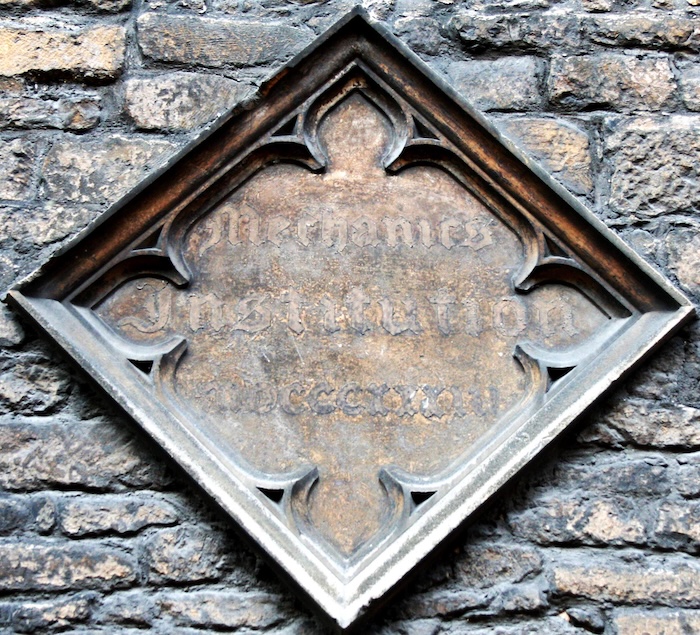
Greyfriars
The Survey of Lincoln’s Lesley Clarke examines the pre-twentieth-century past of one of the city centre’s oldest buildings.
The small stone building sandwiched between the Lincoln Central Library and St Swithin’s Church, now known as ‘Greyfriars’, was once part of a much larger four-acre complex belonging to the Franciscan friars of Lincoln. It was bordered on the east by the Roman defences (now Broadgate), on the south by St Swithin’s Square, on the north by Silver Street, and on the west by Free School Lane. The building which has survived is one of the oldest friary buildings in England.
In 1224 nine Franciscan friars were sent to England by the founder of their order, St Francis of Assisi. Known as ‘Grey Friars’ because of the colour of their habits, the order quickly spread throughout the country, and became established in Lincoln in c.1230.
Unlike monks, who lived in seclusion, friars worked amongst local people, on whose charity they relied, having no income of their own, and being dedicated to a life of poverty and simplicity. Their interaction with local people made them unpopular with priests, who felt they were a threat to their own livelihoods. They were, however, supported by many, including Robert Grosseteste, Bishop of Lincoln, who praised them in a letter to Pope Gregory IX in 1238.
The Grey Friars initially occupied a property adjoining the Guildhall, before accommodation was constructed for them on the current site in c.1237. This was a single storey, rectangular structure of 31 metres by 6.5 metres. A second storey was added in the later thirteenth century when the internal floor was lowered by 70-100 centimetres and a vault of nine bays inserted, supported on eight octagonal central piers. Further support was provided by buttresses constructed against the outside of the south wall.
During the Reformation all of the friars’ religious houses were forced out of existence, and in 1539 the friary of Lincoln’s Franciscans was surrendered. The site was then let and subsequently sold to William Monson, whose son, Robert, inherited, and in 1568 established a free school in Greyfriars, giving Free School Lane its name. In 1574 that school was granted to the city and by 1584 Lincoln Council had started a grammar school in the upper floor of the building, amalgamating the Cathedral School and the Free School. Admission fees were then charged of 6d. for younger boys and 1s. for the older boys.
The building’s undercroft was used for various purposes. In 1576 it became, for a short time, a house of correction, a combination of workhouse and prison. Between c.1693 and 1831, the space was used as a Jersey School; a venture to teach knitting and spinning and give work to the poor. In 1833, the undercroft became the home of Lincoln’s Mechanics’ Institution, a movement to educate working men. It remained in Greyfriars until 1862, when the lower floor was required by the school. The organisation’s plaque remains on the south wall of the building.
After 332 years, Greyfriars’ life as a school came to an end in 1900, when the remaining pupils moved to a new home on Lindum Terrace. The building took on a rather different educational role between 1907 and 2004 when it housed the city and county museum. This important building is now being restored by the City of Lincoln Council and Heritage Lincolnshire, with the help of various funders, including The National Lottery Heritage Fund.
To find out more about The Survey of Lincoln and its work, see www.thesurveyoflincoln.co.uk.
Pictured above is Greyfriars and the ruins of St Swithin’s Church c 1784 by Samuel Hieronymus Grimm – courtesy British Library.
The picture below shows the southside of Greyfriars, while the bottom picture is the Lincoln Mechanics’ Institution plaque.


